Students usually don’t do their homework.
One tutor on my team recently even said to me, when we give homework, we kind of cross our fingers and hope that the student does it, but we know they probably won’t.
Another tutor on my team told me that I can’t make a student do their homework. That’s on them to do. I can assign it, but after that it's in their hands.
Why does this happen? Is it really out of our hands?
Nope. It’s not out of our hands.
Turns out there is a specific process that can be followed to maximize accountability and motivation. I wrote a blog post about it yesterday.
Read that blog post here.
But motivation is actually step 2. It’s not step 1.
So what’s the first step? Let me tell you 😊
Step 1 is to follow a procedure for creating a personalized learning plan. When the procedure is followed, the student will be off to a fantastic start. When the procedure is not followed, the student won’t. In fact, they’ll probably do 0 homework and then come into the next class feeling guilty.
Nobody wants that, so let’s dive into a procedure to make sure everyone reliably begins their journey on the right foot.
Step 1: Provide self-study instructions.
Here’s an example. I’ve screenshotted this from an actual CLN student’s personalized learning plan.
Step 2: Demonstrate the self-study activities.
It’s not just about assigning homework, but rather showing them how to do it. I’ve learned the hard way that students won’t always know how to do assignments on their own, even if I think they’re easy to do.
The demo helps a lot.
Step 3: Explain why this it the plan we’re following.
When I look back at complaints I have gotten at the Calgary Language Nerds over the years, many stem from students not understanding why their tutor is teaching a certain way. Ironically, when I share this with tutors, they are often baffled, since they believe they’ve already explained their approach clearly.
To solve this, I explain the “why” in writing and orally. I also revisit the why regularly to make sure we’re on the same page.
Here’s an example of how I explain the why in a student’s learning plan.
Step 4: Explain the rate of progress.
Students need to know how fast they will progress. I personally show them this table and let them choose how much they want to study.
Step 5: Ask if the student agrees with the plan.
At this point, you will have established what to do for self-study purposes and how long the student plans to study per day. To make sure the student and I are on the same page, I will say:
Let’s make sure we’re on the same page. We’ve agreed that you will do ______ (study activities) for _____ (min a day) in order for you to reach ______ (learning goal). Does this plan work for you?
Step 6: Discuss short-term benchmarks.
In Step 4, we discussed long-term rates of progress. In other words, we looked at how long it takes to level up (e.g., beginner to high-beginner). However, students will not know how much progress to expect on a month-by-month or hour-by-hour basis.
Here’s an example table that I included in a recent personalized learning plan to clarify this.I’ll admit that I don’t like how the table looks visually. I’ll be changing it in the future.
Step 7: Discuss what to expect in-class.
At this point in time, I’ve spent lots of time on providing self-study instructions to students. Therefore, they inevitably end up wondering what they will be doing in-class. They’ll ask something like, so am I just teaching myself a language? Are there any classes or…?
For this reason, I write something like this into the personalized learning plan.
What you’ll do in-class
Classes will be used for slow conversation practice, self-study accountability, and re-assessments every 50 hours of study. Re-assessments are important as they will give data as to your actual rate of progress. Fair warning: conversation practice will be especially clunky in the first 100 hours of study, but is still well worth the effort!
Here’s specifically what to expect in each lesson:
First 10 minutes: review self-study
Did you follow the self-study plan? If yes, great! If not, what happened?
Answer any questions from your self-study efforts
Set a daily study goal for the next week
Remaining 35 minutes: Slow, guided conversation exercises
This process is working.
It works especially well when paired with the motivation & accountability framework I shared yesterday. I’m sure we’ll need to tweak things as time goes on, but so far when we follow these steps it looks like students reliably get off to a running start and are consistent!
Thanks for reading 😃
Azren
Calgary Language Nerds owner
https://azrenthelanguagenerd.com


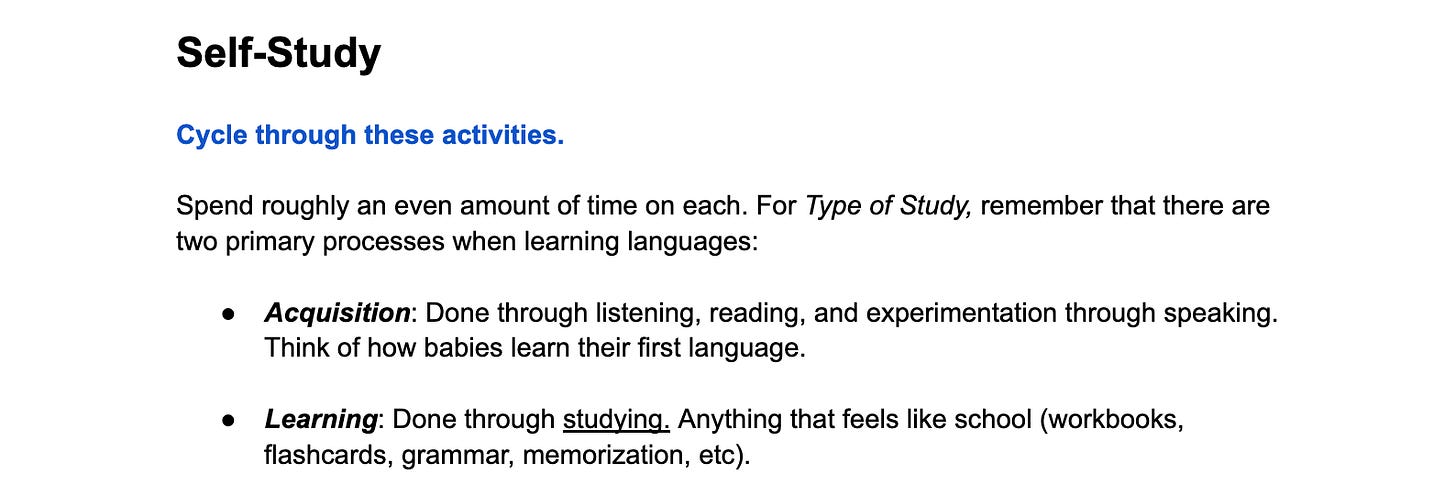
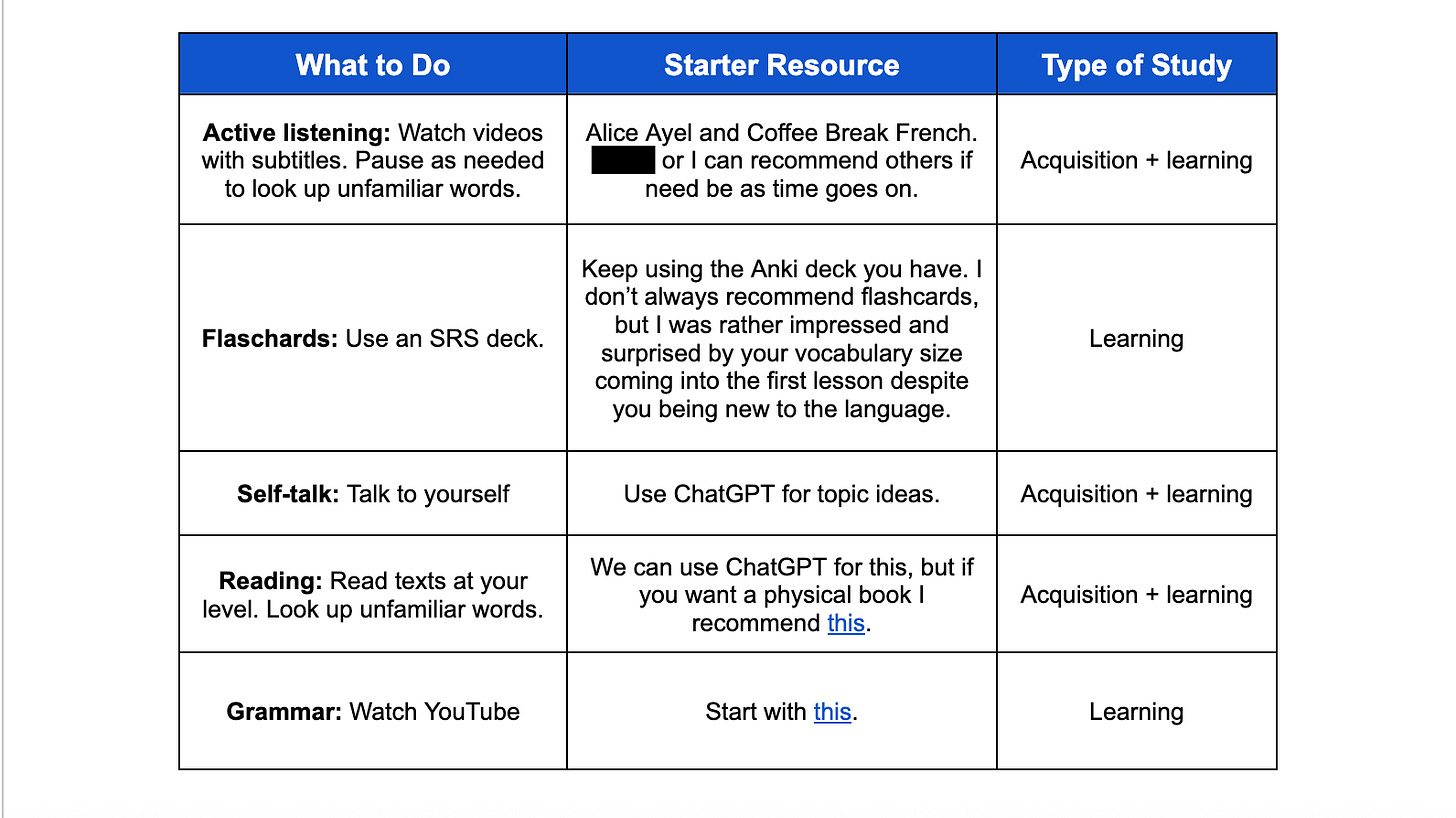
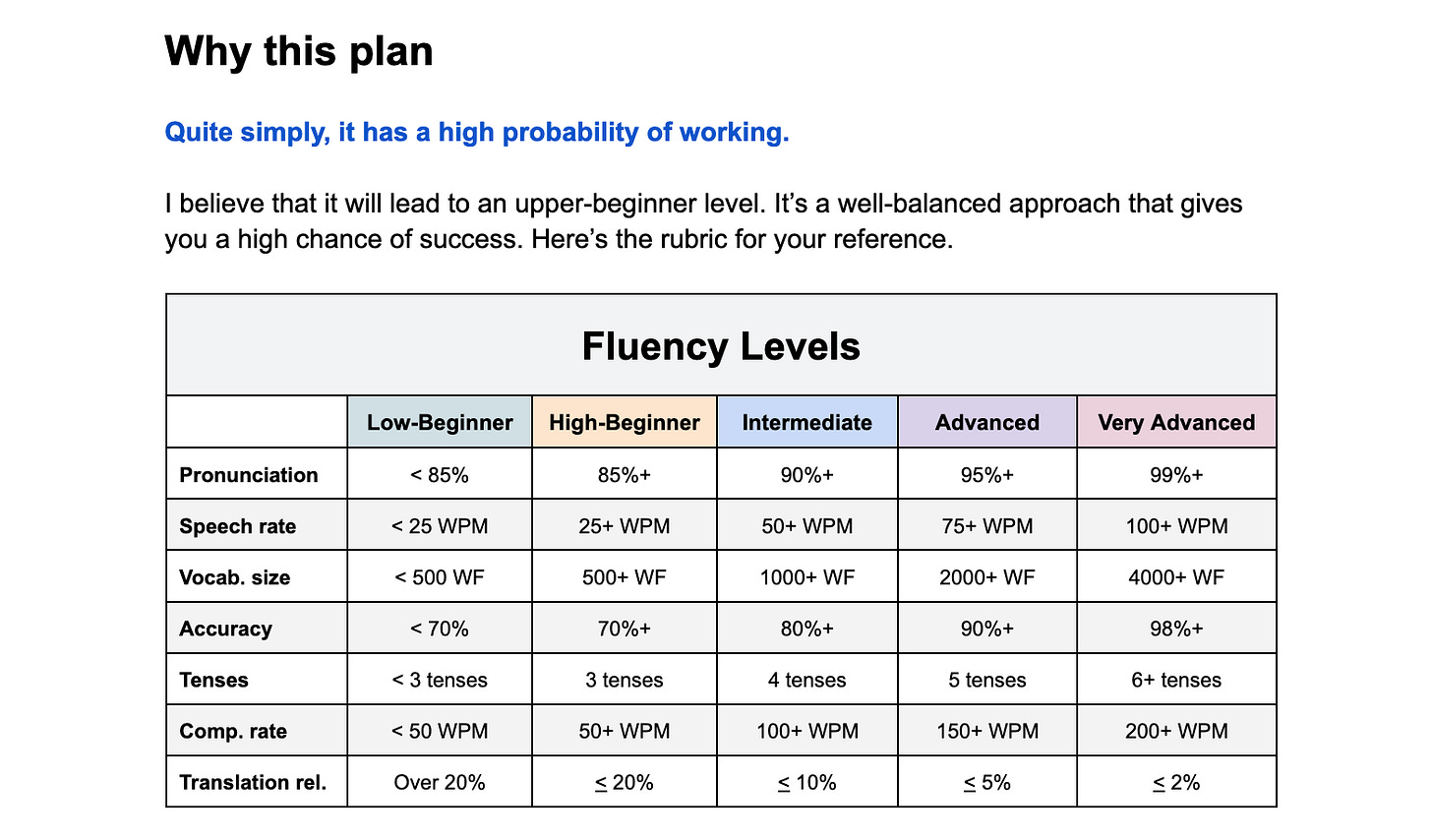
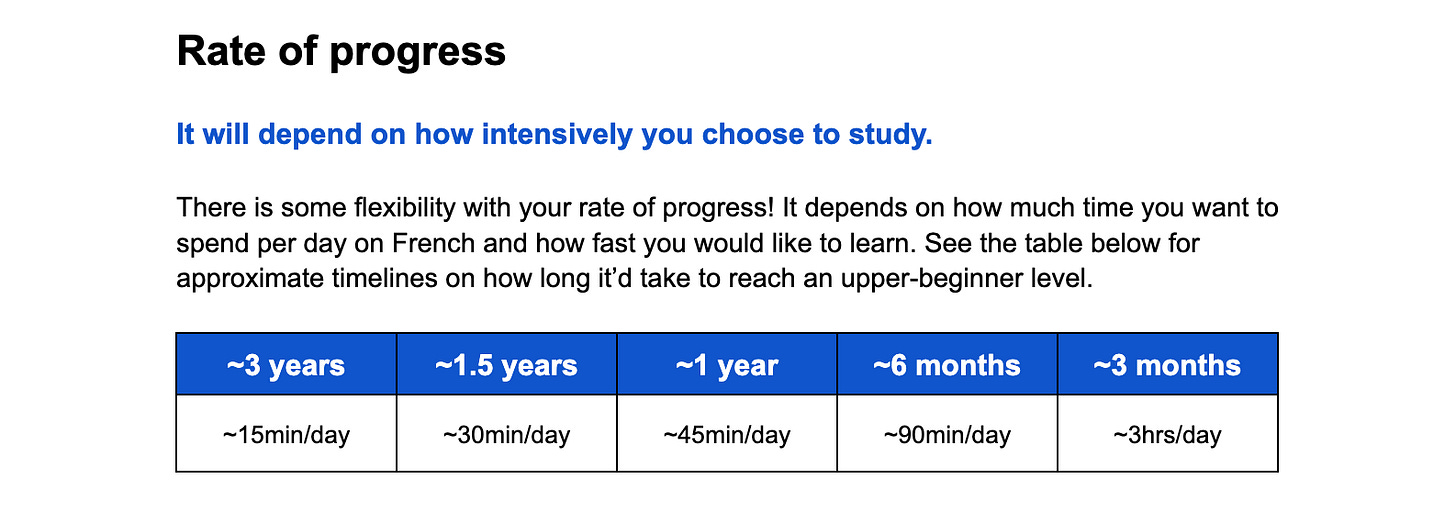

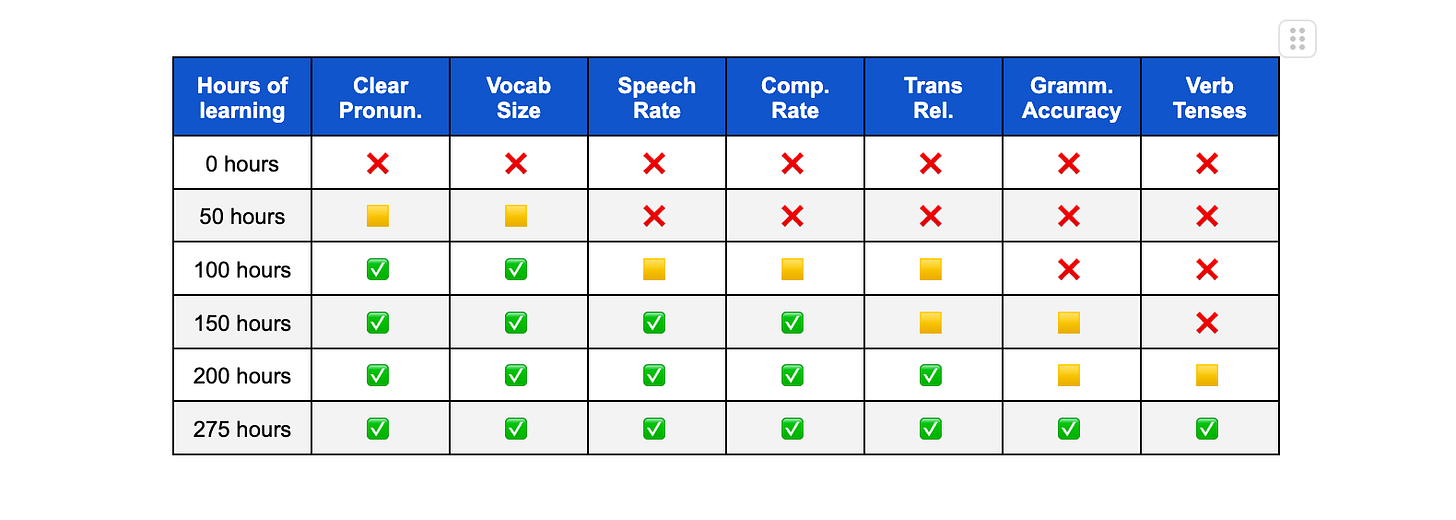
This is a goldmine!
Great practical real world tips. Thank you!